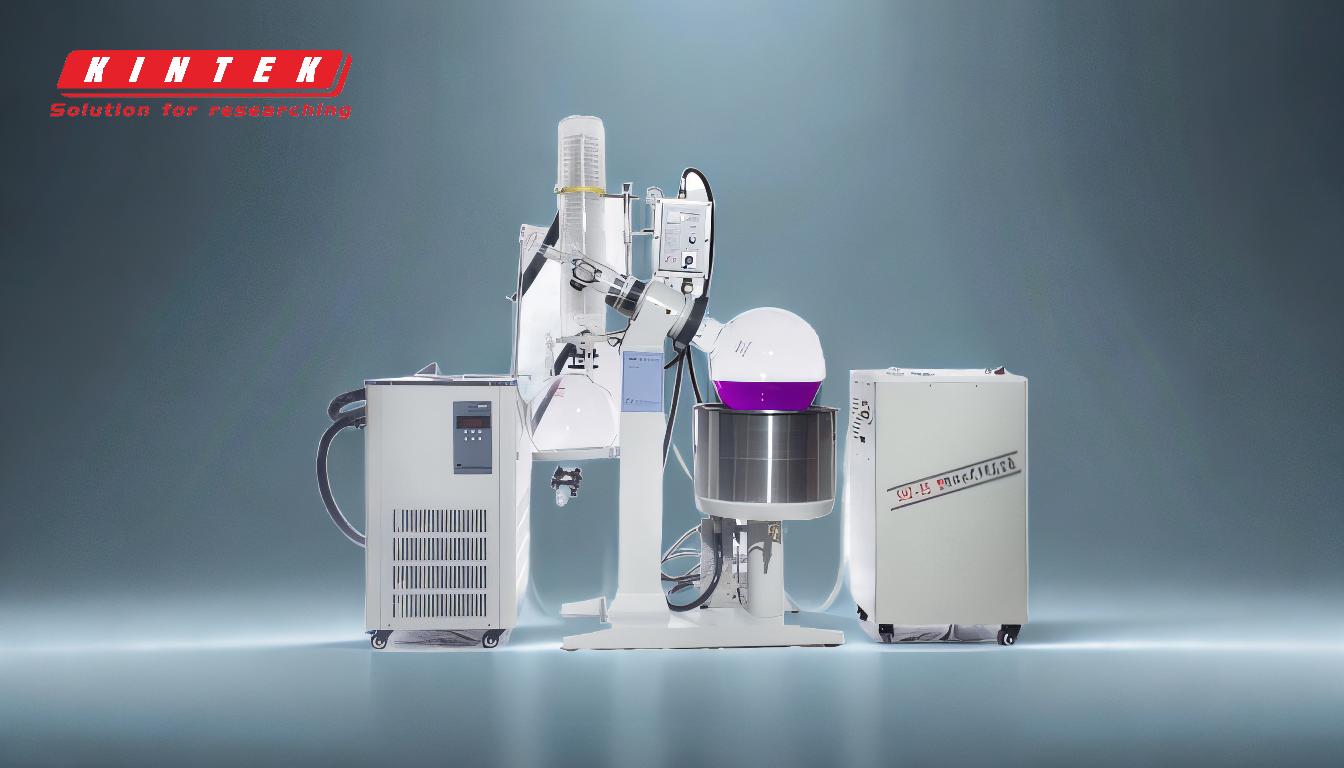Rotovap solvent recovery is a process used to separate and recover solvents from mixtures using a rotary evaporator (rotovap). This technique is particularly useful in laboratories and industries where solvents need to be reused or disposed of safely. The process involves heating the solvent under reduced pressure, which lowers its boiling point, allowing it to evaporate at a lower temperature. The solvent vapors are then condensed and collected in a separate flask, leaving behind the non-volatile components. This method is efficient, precise, and minimizes the risk of oxidation or degradation of the original solution.
Key Points Explained:

-
Principle of Operation:
- The rotovap operates on the principle that the boiling point of a solvent is significantly lower than that of the compound it is dissolved in. By reducing the pressure inside the system, the boiling point of the solvent is lowered, allowing it to evaporate at a much lower temperature than its standard boiling point.
- The process involves heating the solvent in a rotating flask submerged in a heated water bath. The rotation increases the surface area of the liquid, promoting faster and more uniform evaporation.
-
Components of the Rotovap System:
- Rotating Flask: The solution is placed in a round-bottomed flask, which is rotated to increase the surface area of the liquid.
- Heated Water Bath: The flask is submerged in a water bath that is heated to a controlled temperature, facilitating the evaporation of the solvent.
- Vacuum Pump: A vacuum pump is used to reduce the pressure inside the system, lowering the boiling point of the solvent.
- Condenser: The evaporated solvent vapors travel to a condenser, where they are cooled and condensed back into liquid form.
- Receiving Flask: The condensed solvent is collected in a separate flask, while the non-volatile components remain in the original flask.
-
Steps in the Solvent Recovery Process:
- Preparation: The solution is added to the rotating flask, and the water bath is set to the desired temperature.
- Vacuum Application: The vacuum pump is activated to reduce the pressure inside the system, causing the solvent to evaporate at a lower temperature.
- Evaporation: The solvent evaporates from the rotating flask due to the combined effect of heat and reduced pressure.
- Condensation: The solvent vapors travel to the condenser, where they are cooled and condensed back into liquid form.
- Collection: The condensed solvent is collected in the receiving flask, while the concentrated compound remains in the original flask.
-
Advantages of Rotovap Solvent Recovery:
- Efficiency: The process is highly efficient, allowing for the rapid recovery of solvents.
- Precision: The controlled conditions (temperature and pressure) ensure precise separation of solvents from mixtures.
- Safety: The process minimizes the risk of oxidation or degradation of the original solution, preserving its integrity.
- Reusability: The recovered solvent can be reused, reducing waste and cost.
-
Applications:
- Laboratory Research: Commonly used in chemistry labs for solvent recovery and concentration of solutions.
- Pharmaceutical Industry: Used in the purification and concentration of active pharmaceutical ingredients (APIs).
- Food and Beverage Industry: Employed in the extraction and concentration of flavors and essences.
- Environmental Testing: Utilized in the analysis and recovery of solvents from environmental samples.
-
Considerations for Equipment Purchasers:
- Capacity: Choose a rotovap with a flask size that matches the volume of solvent to be recovered.
- Temperature Control: Ensure the system has precise temperature control for the water bath.
- Vacuum Efficiency: Consider the efficiency of the vacuum pump and its ability to achieve the desired pressure reduction.
- Condenser Type: Select a condenser that is suitable for the solvents being recovered (e.g., water-cooled or cold finger).
- Safety Features: Look for safety features such as automatic shut-off and pressure relief valves.
In summary, rotovap solvent recovery is a versatile and efficient method for separating and recovering solvents from mixtures. It is widely used in various industries due to its precision, safety, and ability to preserve the integrity of the original solution. When purchasing a rotovap, it is important to consider factors such as capacity, temperature control, vacuum efficiency, and safety features to ensure optimal performance.
Summary Table:
| Key Aspect | Details |
|---|---|
| Principle of Operation | Lowers solvent boiling point under reduced pressure for efficient recovery. |
| Components | Rotating flask, heated water bath, vacuum pump, condenser, receiving flask. |
| Process Steps | Preparation, vacuum application, evaporation, condensation, collection. |
| Advantages | High efficiency, precision, safety, and solvent reusability. |
| Applications | Labs, pharmaceuticals, food & beverage, environmental testing. |
| Purchase Considerations | Capacity, temperature control, vacuum efficiency, condenser type, safety. |
Ready to optimize your solvent recovery process? Contact us today for expert guidance and solutions!










